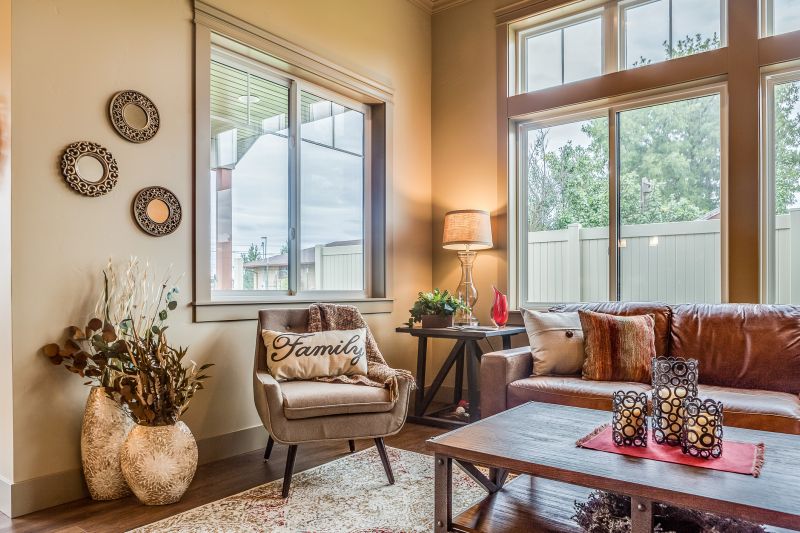Top-Rated Products for Office Sound Insulation and Noise Control
Browse through the most effective soundproofing products designed to control noise and improve office acoustics.
 Creating an effective office environment often involves managing sound levels to promote focus and productivity. Sound insulation products for offices come in various forms, each designed to reduce noise transmission and improve acoustic comfort. These products can help minimize distractions from conversations, phone calls, and external noise sources, creating a more serene workspace. When selecting sound insulation solutions, it is important to consider the specific needs of the office, including the size of the space, the type of noise to be mitigated, and aesthetic preferences.
Creating an effective office environment often involves managing sound levels to promote focus and productivity. Sound insulation products for offices come in various forms, each designed to reduce noise transmission and improve acoustic comfort. These products can help minimize distractions from conversations, phone calls, and external noise sources, creating a more serene workspace. When selecting sound insulation solutions, it is important to consider the specific needs of the office, including the size of the space, the type of noise to be mitigated, and aesthetic preferences.
Top Overall Option
Acoustic Panel System
An acoustic panel system offers a versatile and customizable solution for office sound insulation. These panels are available in various sizes, shapes, and finishes, allowing integration into different office aesthetics. They are typically made from porous materials like foam or mineral wool, designed to absorb sound waves effectively. Easy to install and maintain, acoustic panels can be mounted on walls or ceilings to reduce echo and ambient noise, contributing to a quieter work environment.
Types of Products For Office Sound Insulations
Acoustic Wall Panels
Wall-mounted panels designed to absorb sound and reduce echo within office spaces.
Ceiling Tiles
Acoustic tiles installed in ceilings to dampen sound transmission and improve room acoustics.
Soundproof Drywall
Specialized drywall with added mass to block sound transmission between rooms.
Mass Loaded Vinyl Barriers
Dense vinyl sheets used as barriers within walls or floors to block sound transmission.
Acoustic Curtains
Heavy curtains designed to absorb sound and reduce noise from windows or open spaces.
Window Inserts
Removable inserts that fit into window frames to diminish external noise.
Door Seals and Sweeps
Seals and sweeps that block gaps around doors to prevent sound leaks.
Portable Soundproof Booths
Movable enclosures for private calls or focused work, reducing ambient noise.
Acoustic Foam Panels
Foam panels that absorb sound waves, often used for echo control.
Carpet and Underlayments
Floor coverings that help absorb impact and reduce airborne noise.
Soundproof Doors
Doors constructed with soundproofing materials to limit noise transfer between rooms.
Underfloor Sound Insulation
Insulation materials placed beneath flooring to prevent sound transmission to lower levels.
Decoupling Mounts and Clips
Installation hardware that minimizes sound vibration transfer through structural elements.
Sound Absorbing Art Panels
Decorative panels that serve both aesthetic and acoustic purposes.
Popular Choices
Flexible and easy-to-install panels that help manage sound reflections within office spaces.
Widely used in office ceilings to improve sound quality and reduce noise levels.
Effective at reducing external noise and enhancing privacy for office environments.
Commonly used to block gaps around doors for better sound containment.
Popular for private calls and focused work in shared office spaces.
Affordable and versatile, suitable for reducing echo and improving room acoustics.
Effective at dampening sound from windows and open areas, often used in conference rooms.
Installed within walls or floors to help block sound transmission between spaces.
Reduce impact noise and airborne sound, especially in open-plan offices.
Combines visual appeal with sound absorption, suitable for modern office decor.
Office sound insulation products range from temporary solutions like portable panels to permanent installations such as wall coverings and ceiling treatments. Acoustic panels are among the most common options, offering versatility and ease of installation. They can be mounted on walls or ceilings to absorb sound waves and reduce echo. For more comprehensive soundproofing, mass-loaded vinyl barriers and soundproof drywall can be added to existing structures. Additionally, soundproof curtains and window inserts can significantly diminish noise coming from outside or adjoining rooms.
Choosing the right sound insulation product involves understanding the different materials and their acoustic properties. Porous materials like foam and mineral wool are effective at absorbing sound, while dense materials such as mass-loaded vinyl block sound transmission. Combining multiple products can yield better results, especially in open-plan offices or spaces with high noise levels. Proper installation is crucial to maximize the effectiveness of these products, and consulting with acoustic specialists can help determine the best combination for specific office environments.
Key Buying Considerations
- Determine the primary noise source and choose products designed to address it effectively.
- Consider the size and layout of the office space to select appropriately scaled solutions.
- Evaluate the materials used in sound insulation products for their acoustic properties and durability.
- Assess the aesthetic compatibility of the products with your office decor.
- Installation complexity and whether professional help is needed can influence overall costs.
- Portability and flexibility of solutions like booths or curtains can be beneficial for dynamic spaces.
- Check for compatibility with existing structures, especially for wall and ceiling treatments.
- Consider maintenance requirements to ensure long-term effectiveness.
- Review product certifications or standards related to soundproofing performance.
- Balance between cost and effectiveness to find a solution that fits your budget.
- Look for products that can be easily integrated or removed if needed for space reconfiguration.
- Prioritize products with good reviews and proven performance in similar environments.
- Account for any safety or fire regulations relevant to office environments.
- Think about future scalability if expanding or modifying the office layout.
- Evaluate additional features such as aesthetic options, color choices, or decorative elements.
This page contains affiliate links. We may earn a commission if you purchase through these links, at no additional cost to you.
